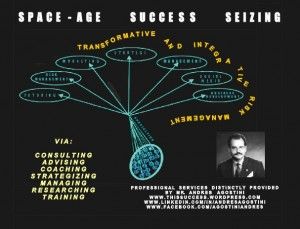Mar 8, 2014
Leaked NSA document confirms online covert deception involves UFOs
Posted by Seb in categories: alien life, government, security, surveillance
Michael Salla — Honolulu Exopolitics Examiner
 Among the leaked Snowden National Security Agency (NSA) documents, the first to explicitly involve the UFO issue has just been released and is currently generating much media scrutiny. The 50 page document is a powerpoint presentation titled “The Art of Deception: Training for a New Generation of Online Covert Operations,” and was authored by the British equivalent of the NSA, the Government Communications Headquarters (GCHQ). The document was the subject to an in-depth story released this week by Glenn Greenwald, the journalist who first worked with Edward Snowden to release to the world official NSA surveillance of the general public, and foreign government officials. The leaked document details how the NSA is working with its “Five Eyes” partners in Britain, Canada, Australia and New Zealand to train its operatives in online covert operations. Greenwald’s article exposes how the NSA and its Five Eyes intelligence partners encourage a range of psychological warfare tools to discredit any targets discussing sensitive national security information. In the “Art of Deception” document three of the 50 slides show images of UFOs – one of which dates from 1950. The leaked document reveals a clear connection between online covert operations by the GCHQ and its intelligence partners on the UFO issue. It is smoking gun evidence that the international intelligence community is training its covert operatives to deceive the public on a range of sensitive national security issues including UFOs.
Among the leaked Snowden National Security Agency (NSA) documents, the first to explicitly involve the UFO issue has just been released and is currently generating much media scrutiny. The 50 page document is a powerpoint presentation titled “The Art of Deception: Training for a New Generation of Online Covert Operations,” and was authored by the British equivalent of the NSA, the Government Communications Headquarters (GCHQ). The document was the subject to an in-depth story released this week by Glenn Greenwald, the journalist who first worked with Edward Snowden to release to the world official NSA surveillance of the general public, and foreign government officials. The leaked document details how the NSA is working with its “Five Eyes” partners in Britain, Canada, Australia and New Zealand to train its operatives in online covert operations. Greenwald’s article exposes how the NSA and its Five Eyes intelligence partners encourage a range of psychological warfare tools to discredit any targets discussing sensitive national security information. In the “Art of Deception” document three of the 50 slides show images of UFOs – one of which dates from 1950. The leaked document reveals a clear connection between online covert operations by the GCHQ and its intelligence partners on the UFO issue. It is smoking gun evidence that the international intelligence community is training its covert operatives to deceive the public on a range of sensitive national security issues including UFOs.


 If scientists do find life on Mars, it may be possible to beam Martian DNA back to Earth, according to a new idea growing in popularity. If Martian bugs are found, the idea of “faxing” life from Mars is an enticing prospect, spurred on by scientist, Craig Venter, famous for his early sequencing of the human genome.
If scientists do find life on Mars, it may be possible to beam Martian DNA back to Earth, according to a new idea growing in popularity. If Martian bugs are found, the idea of “faxing” life from Mars is an enticing prospect, spurred on by scientist, Craig Venter, famous for his early sequencing of the human genome.












